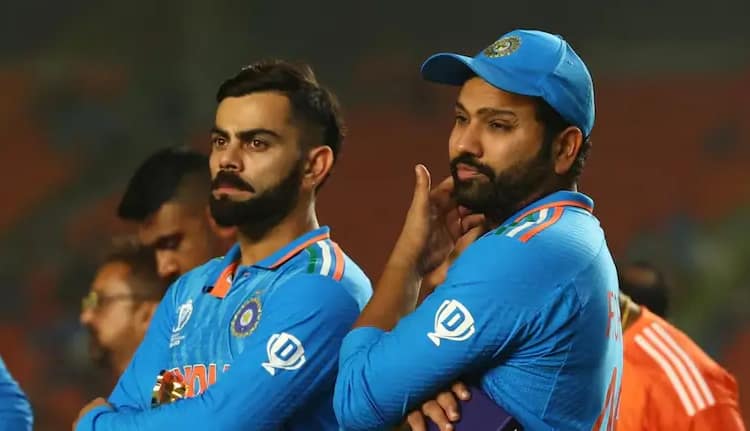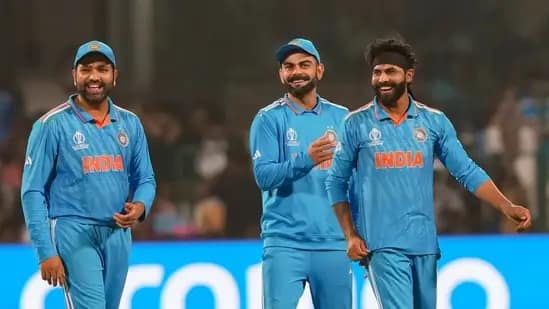Virat Kohli and Rohit Sharma changed how India plays and feels in one-day cricket. Their careers became symbols of belief, attitude, and unmatched consistency. Together, they transformed ODI cricket from individual brilliance into a cultural identity for Indian fans. Their legacy is about impact, not just records and numbers, like against good teams.
Kohli redefined India’s approach through fitness, focus, and competitive hunger. He valued outcomes over personal milestones and made chasing a national art. Under his watch, India learned to dominate pressure and believe in any conditions. His captaincy brought structure, confidence, and an edge missing since the Dhoni era.
Rohit, in contrast, built his empire on patience and rhythm. His timing, calmness, and effortless strokeplay made the format beautiful again. He evolved from a middle-order struggler to one of the most complete openers ever. Together, Kohli and Rohit turned Indian ODI cricket into a story of discipline and belief, not statistics.
How Kohli and Rohit Built India’s ODI Identity?
Their true achievement lies beyond tallies and averages. They made winning India’s default mindset. Kohli brought intensity and accountability to every dressing-room session. He demanded that players think like athletes, not just cricketers. His impact was visible even in fielding standards and team fitness.
Rohit balanced this ferocity with calm precision. His presence stabilised the dressing room, offering perspective when pressure built. He showed that aggression could exist in silence, that calmness could also win games. His batting became a reflection of his leadership — fluent, controlled, and graceful under stress.
Under their combined influence, India stopped playing for moments and started playing for eras. From 2013 to 2025, they carried Indian cricket through leadership transitions smoothly. Kohli made chasing totals an art form; Rohit made setting them an exhibition. Their complementary strengths made India consistent in ICC tournaments and bilateral series alike.
Even when roles changed, the culture they built remained intact. Their values — self-belief, structure, and fearlessness — now define Indian ODI cricket at its core.
Different Paths, Same Purpose
Kohli’s rise was aggressive, sharp, and driven by control over chaos. He conquered pace and built pressure through intensity and preparation. Rohit’s journey, however, was patient and poetic, built on timing and grace. He waited years for his moment, then ruled ODIs with quiet authority.
Both found success through hard work, resilience, and respect for the 50-over format. They chased perfection not through records, but through responsibility. Together, they became more than players — they became the blueprint for modern Indian cricket.
Will Kohli Retire After the Australia Series?
Every big series reignites speculation about Virat Kohli’s retirement. At 36, he remains one of India’s fittest and most consistent performers. His motivation hasn’t faded; if anything, it has become more purposeful. He plays with clarity, aware that every inning now adds to his story.
Kohli’s decision will not be emotional. He values timing and legacy above all else. A sudden announcement after the Australia series seems unlikely. He continues to enjoy the competition and mentoring younger players. His influence extends beyond batting — it shapes the team’s mindset and professionalism.
If retirement comes, it will be structured and dignified. He will likely choose a symbolic moment, perhaps after another global event. Until then, fans should expect him to keep competing fiercely. His intensity might shift in tone, but never in purpose. Kohli’s journey is still being written.
What Will Influence Kohli’s Next Step?
Kohli will weigh his fitness, family life, and team direction carefully. His emotional attachment to Indian cricket runs deeper than milestones. The 2027 ODI World Cup could still be part of his mental timeline. He might choose to guide India until that transition completes.
He’s unlikely to retire while his form remains competitive globally. For now, every run adds strength to a legacy built on effort and evolution. His decisions will focus on balance — not burnout. Fans can be certain that whenever he retires, it will feel right, not rushed.
Will Rohit Sharma Retire After the Australia Series?
Like Kohli, Rohit Sharma’s retirement has also become a talking point. At 38, his maturity and poise define his leadership. Yet, his hunger to compete still burns quietly beneath the surface. He continues to deliver big-match performances and guide the next generation.
Rohit’s leadership through the 2023 World Cup showed how calmness wins tournaments. His ODI strategy — attacking early, stabilising later — remains a masterclass. Unless injuries force his hand, retirement after the Australia tour feels premature. He still enjoys the grind, the planning, and mentoring young openers.
If he retires, it will be a transition, not an exit. He’ll leave behind a structure, not a vacuum. Rohit understands timing — in shots, in decisions, and in goodbyes. Fans can expect him to choose that moment with dignity and complete clarity, against teams and timeline.
When Might Rohit Step Away?
Rohit’s retirement will likely depend on his physical readiness and mental space. He’s not chasing runs now; he’s chasing peace in contribution. Once he feels the next generation is ready, he might step aside gracefully.
Until then, he’ll keep building India’s batting order with calm authority. His focus lies on teaching rhythm, not just strokeplay. A farewell after Australia? Unlikely. A gradual phase-out over seasons? More probable. Rohit’s story, like his batting, will end with timing — not surprise.
The Legacy That Numbers Can’t Explain
Kohli and Rohit have both scored mountains of runs and hundreds. But their real legacy lies in how they made fans feel. They made Indian cricket confident again. They turned the 50-over format into a stage of dominance, not survival.
Kohli gave India aggression with accountability. Rohit gave the side calmness with consistency. Together, they built an era defined by respect for process and preparation. Their passion brought back joy to ODI cricket at a time when formats blurred.
Their record-breaking partnerships and individual performances changed global perceptions of India’s adaptability. More importantly, their leadership taught players to value purpose over popularity, like Punjab Kings. Future captains will walk paths that these two carved with sweat and silence. Their careers prove that greatness isn’t in numbers — it’s in lasting influence.
Conclusion
Virat Kohli and Rohit Sharma didn’t just play cricket — they reshaped India’s spirit. Their ODI legacy will outlive their records because it changed what success meant. It wasn’t about centuries or averages; it was about identity and self-belief.
Retirement talks may dominate headlines, but their essence remains unmatched. Kohli’s passion and Rohit’s poise represent two sides of Indian greatness. They gave Indian cricket more than titles — they gave it stability, culture, and confidence.
Their final innings will come, but their impact has already inspired generations. The Rohit-Kohli era will remain a golden chapter in Indian ODI history. For fans, their true gift is belief — the kind that turns a game into something greater than numbers.







